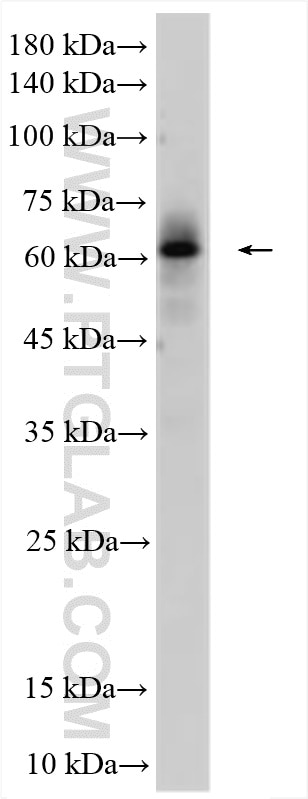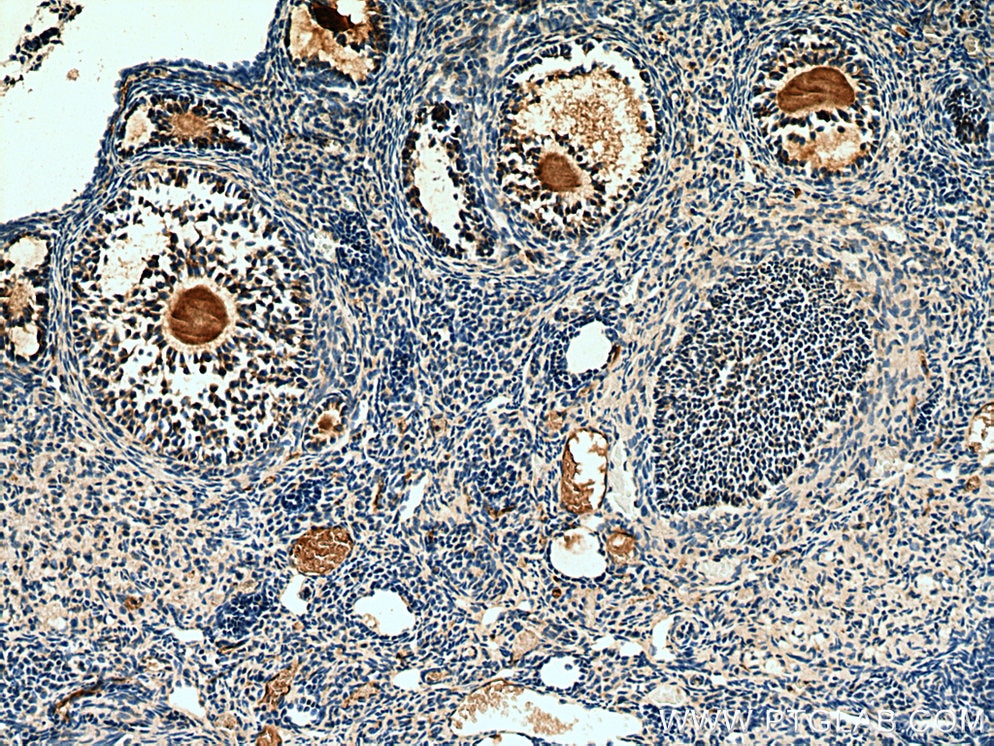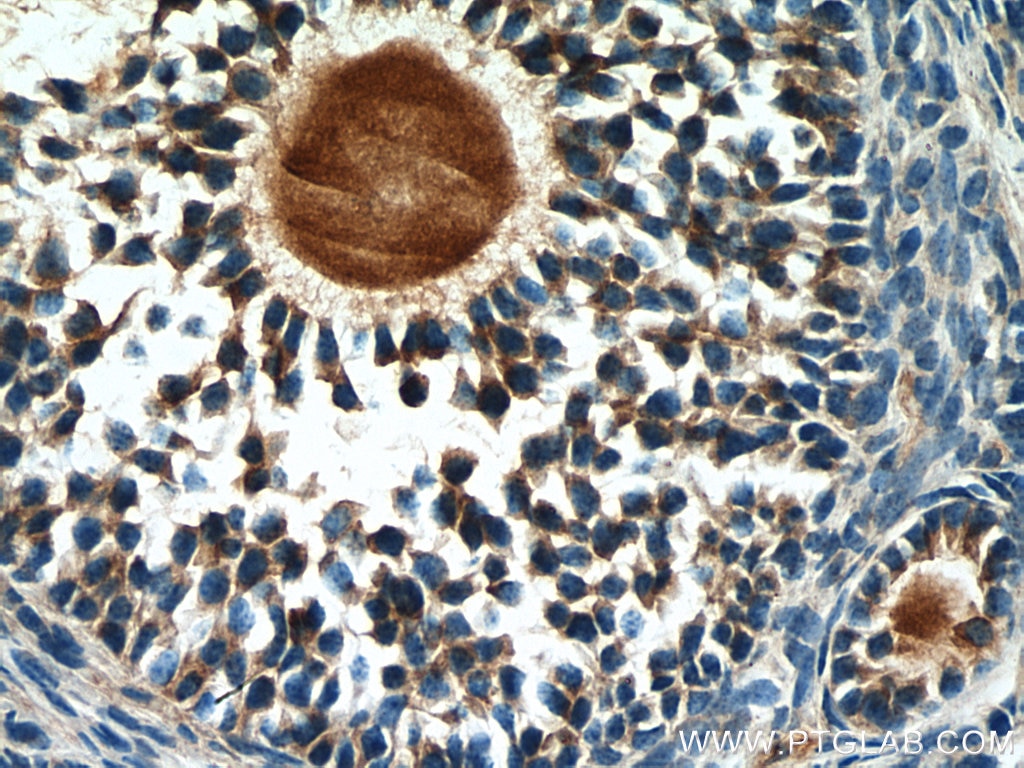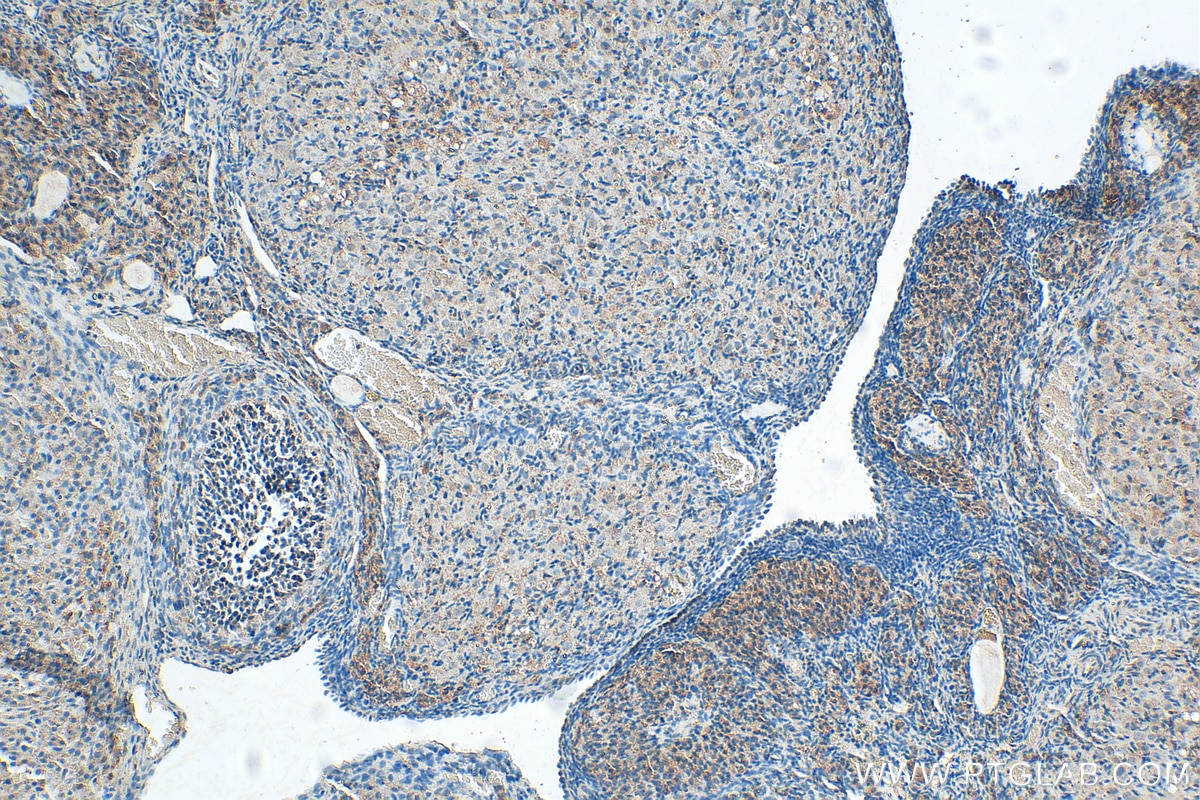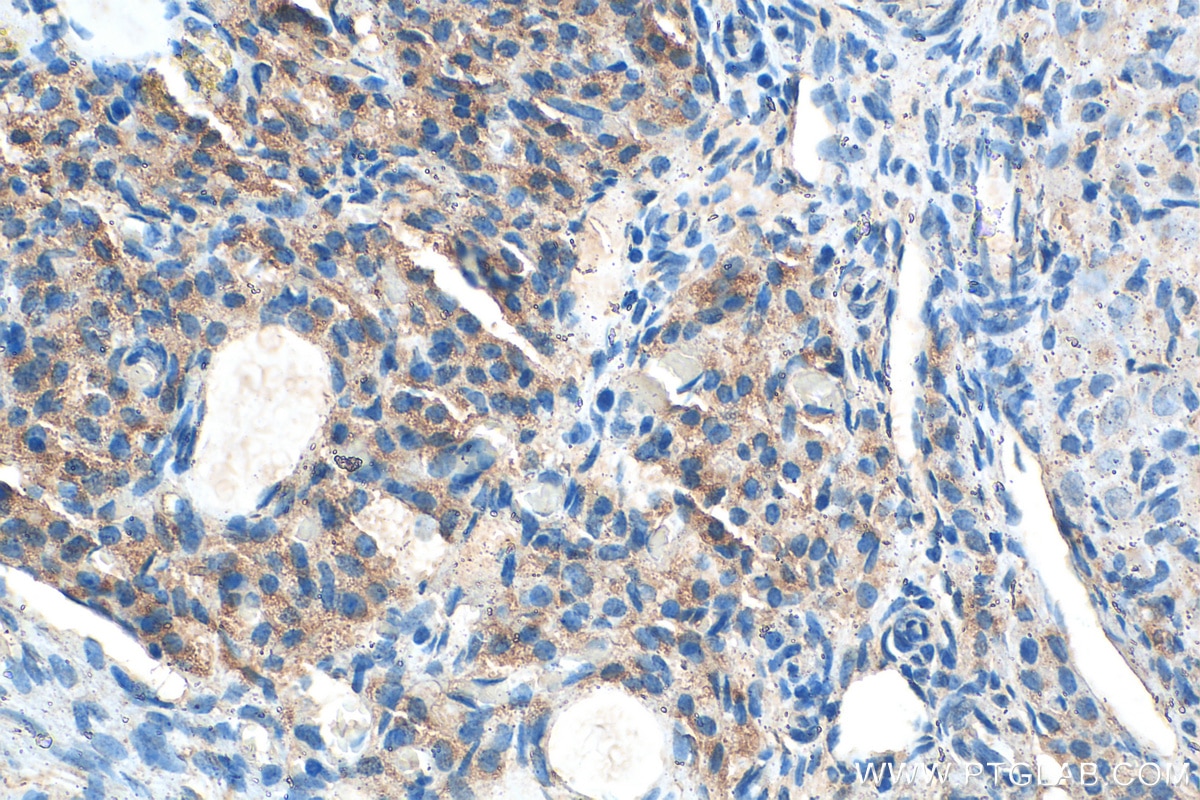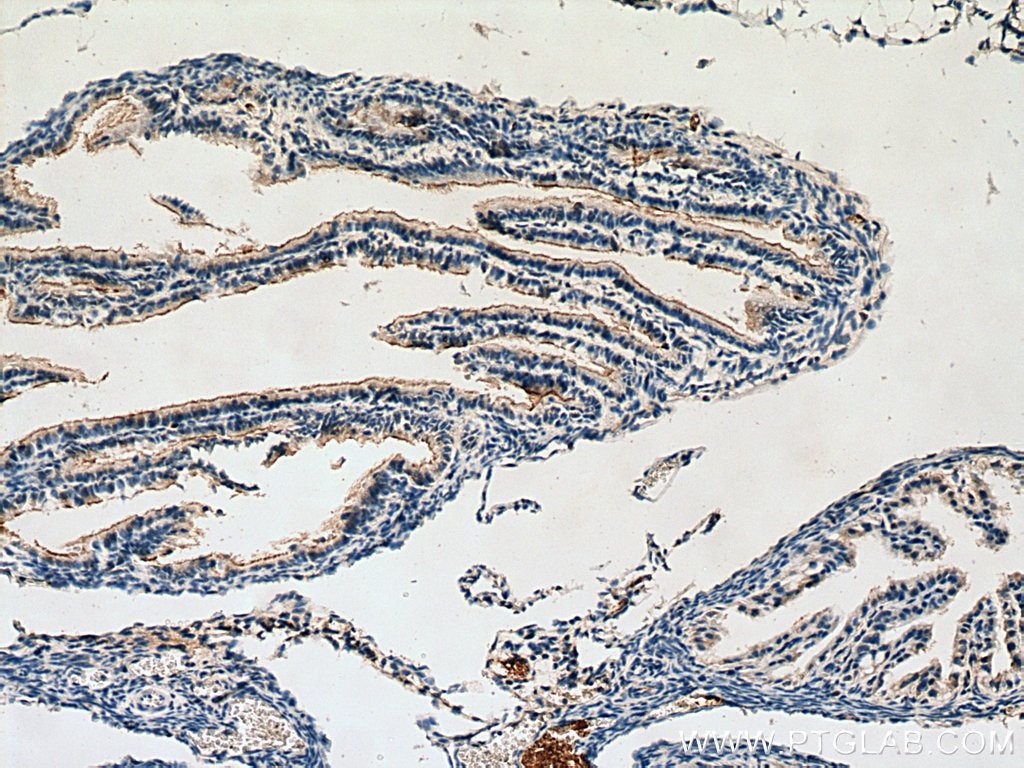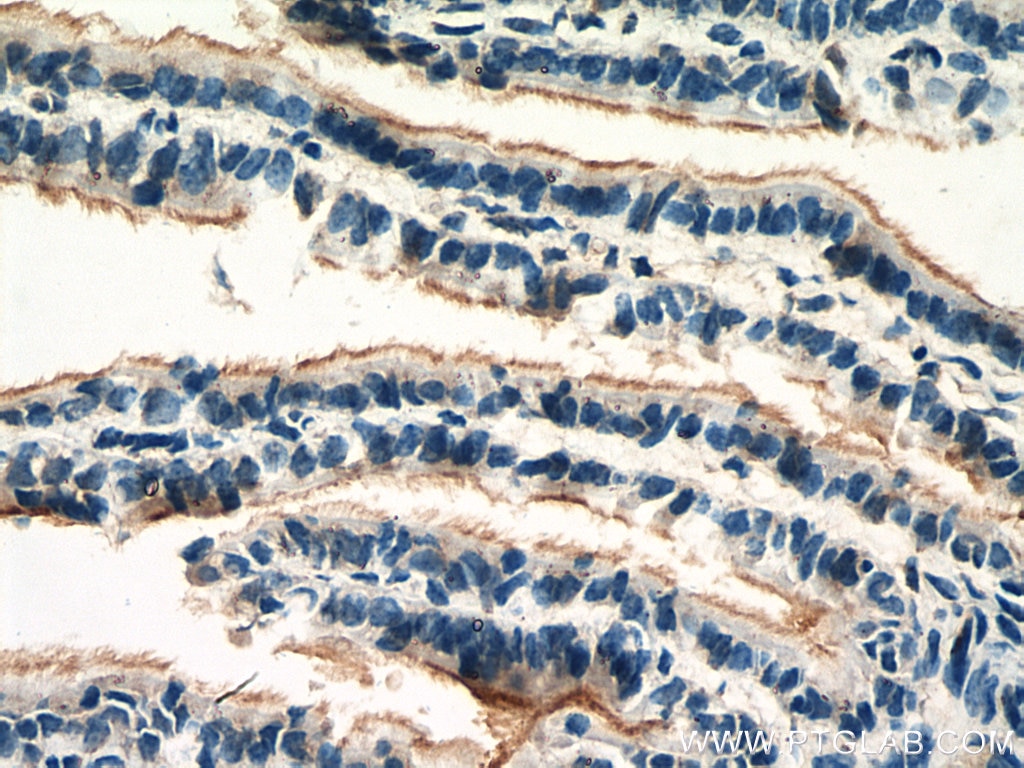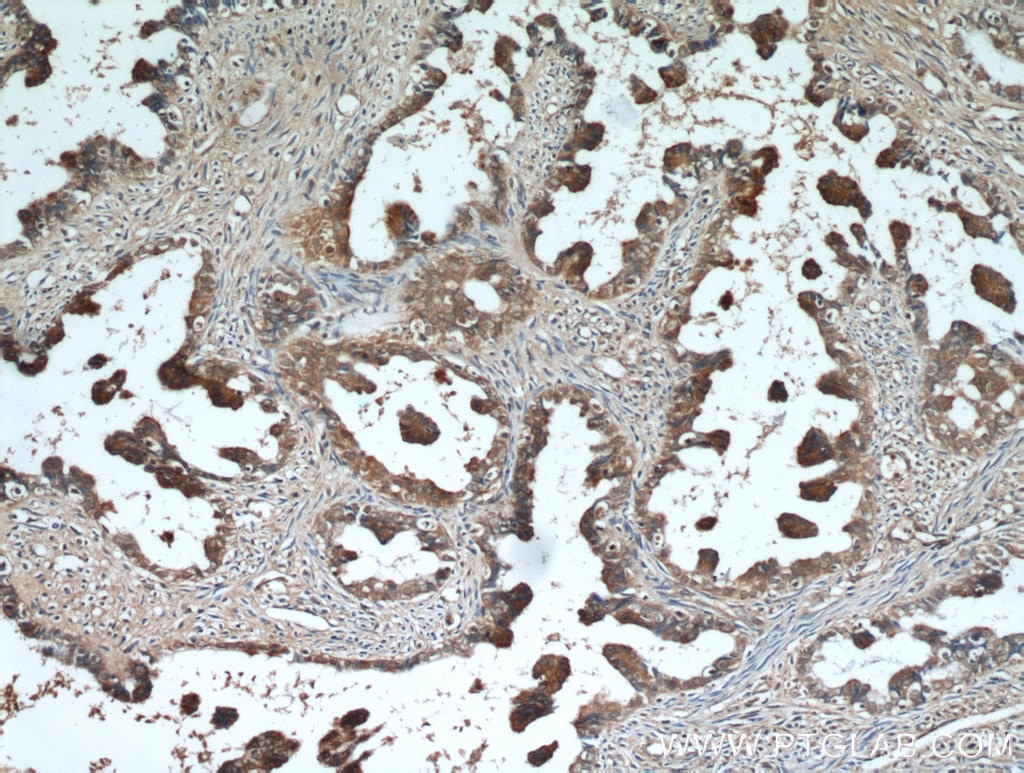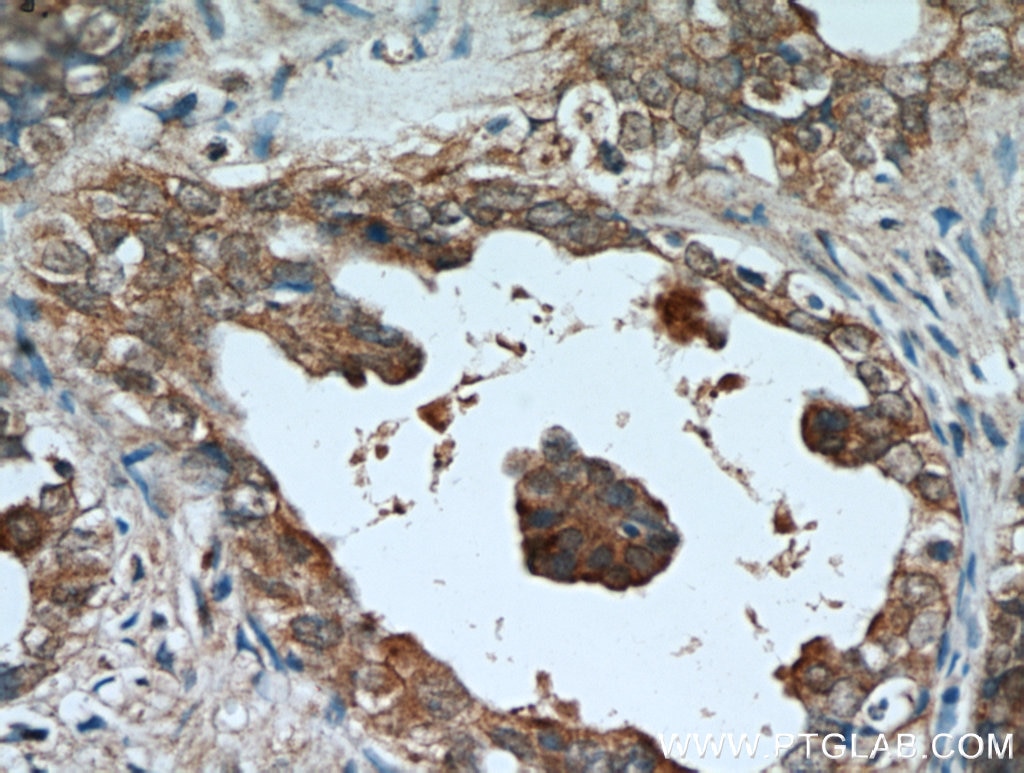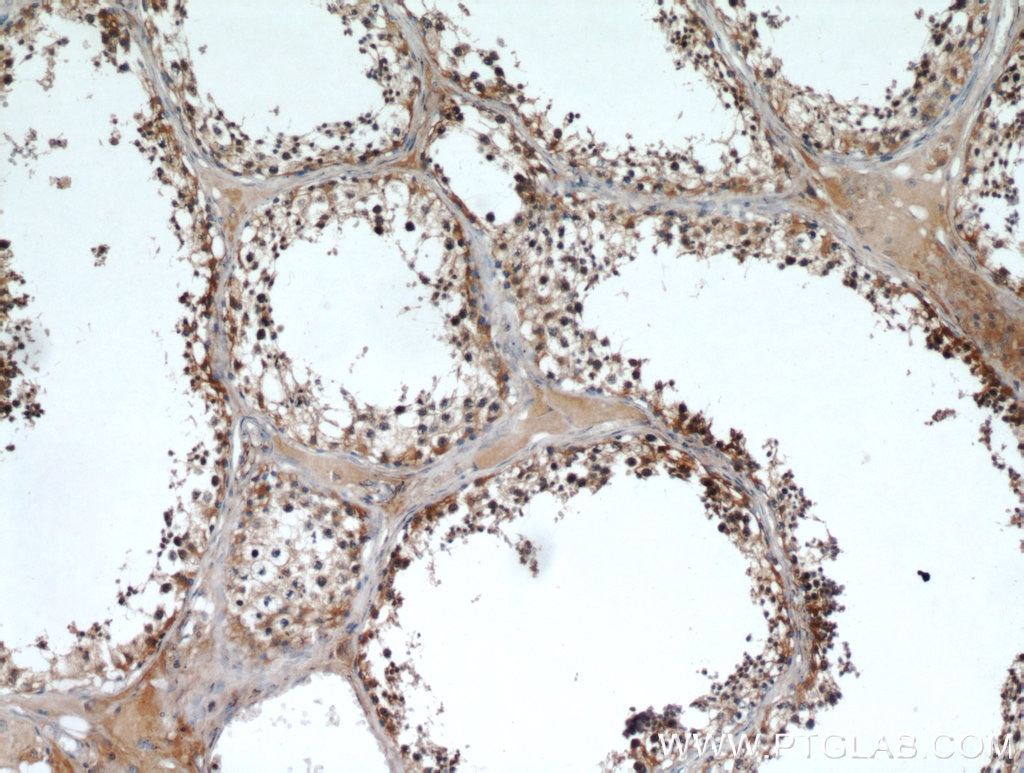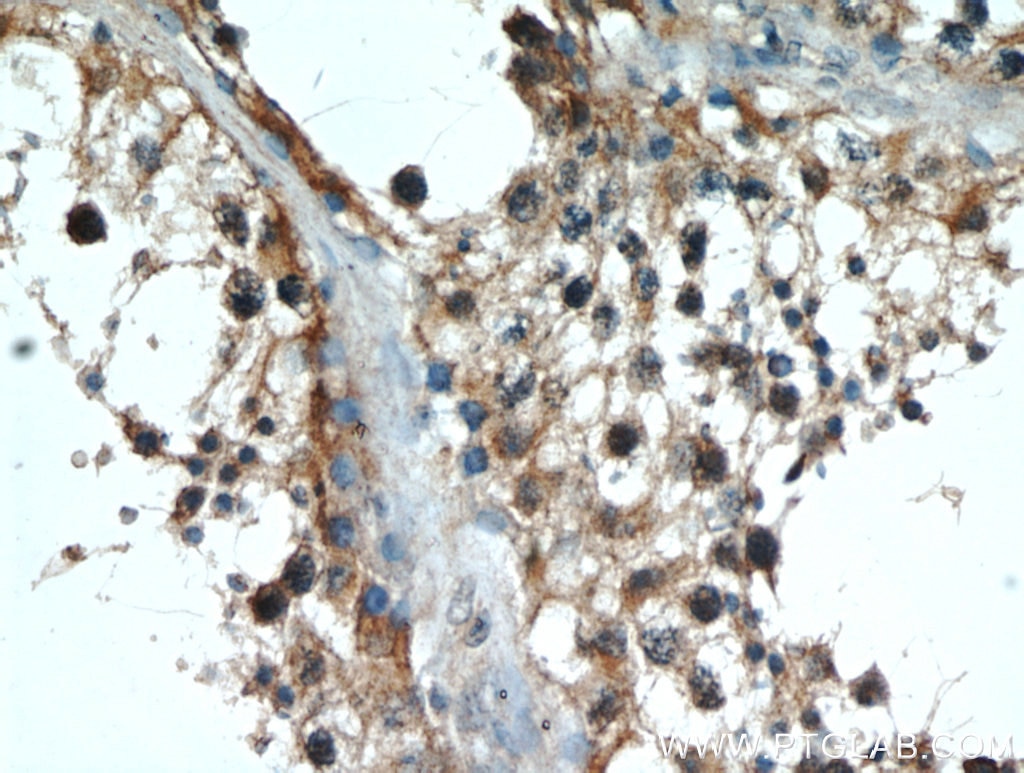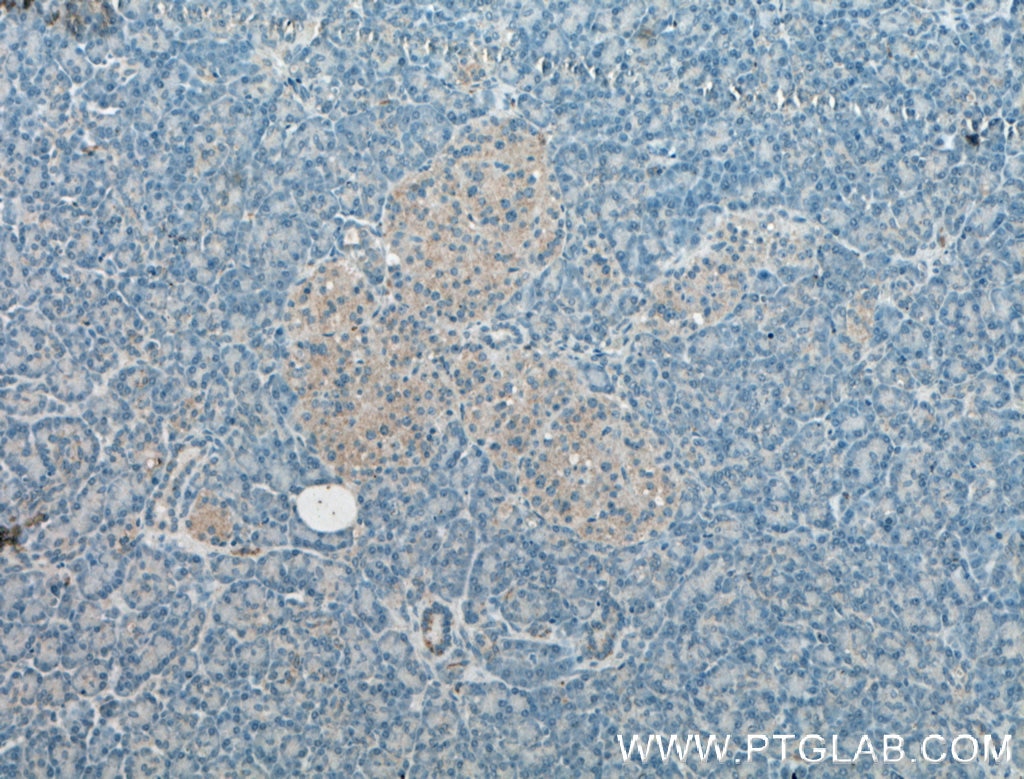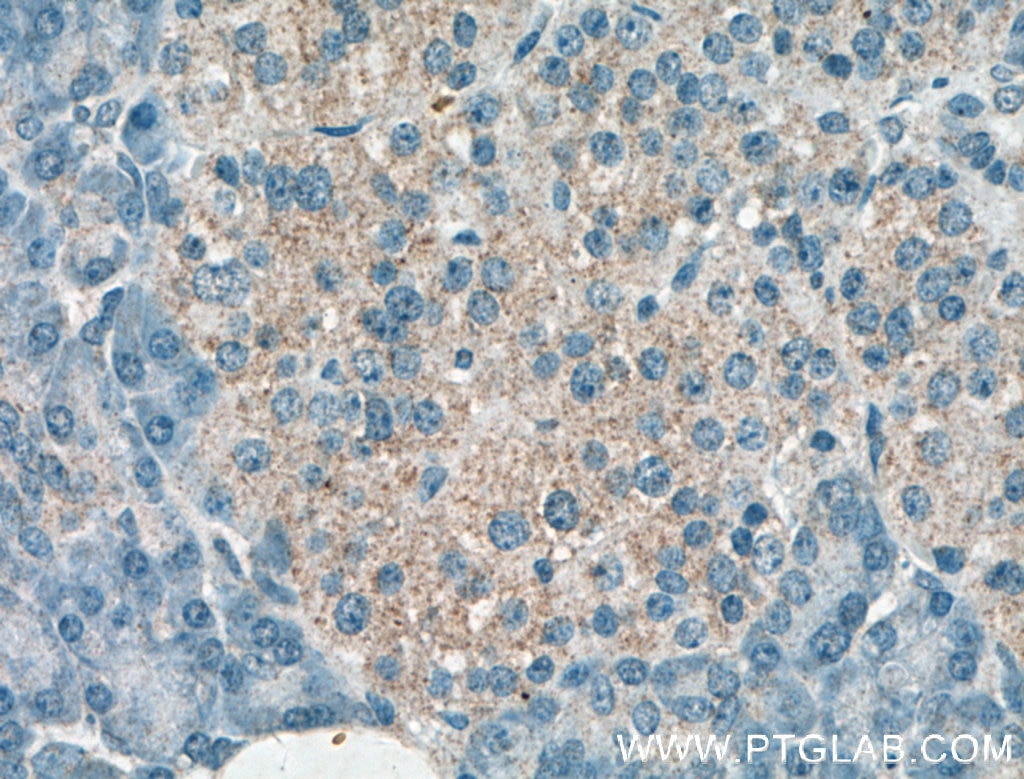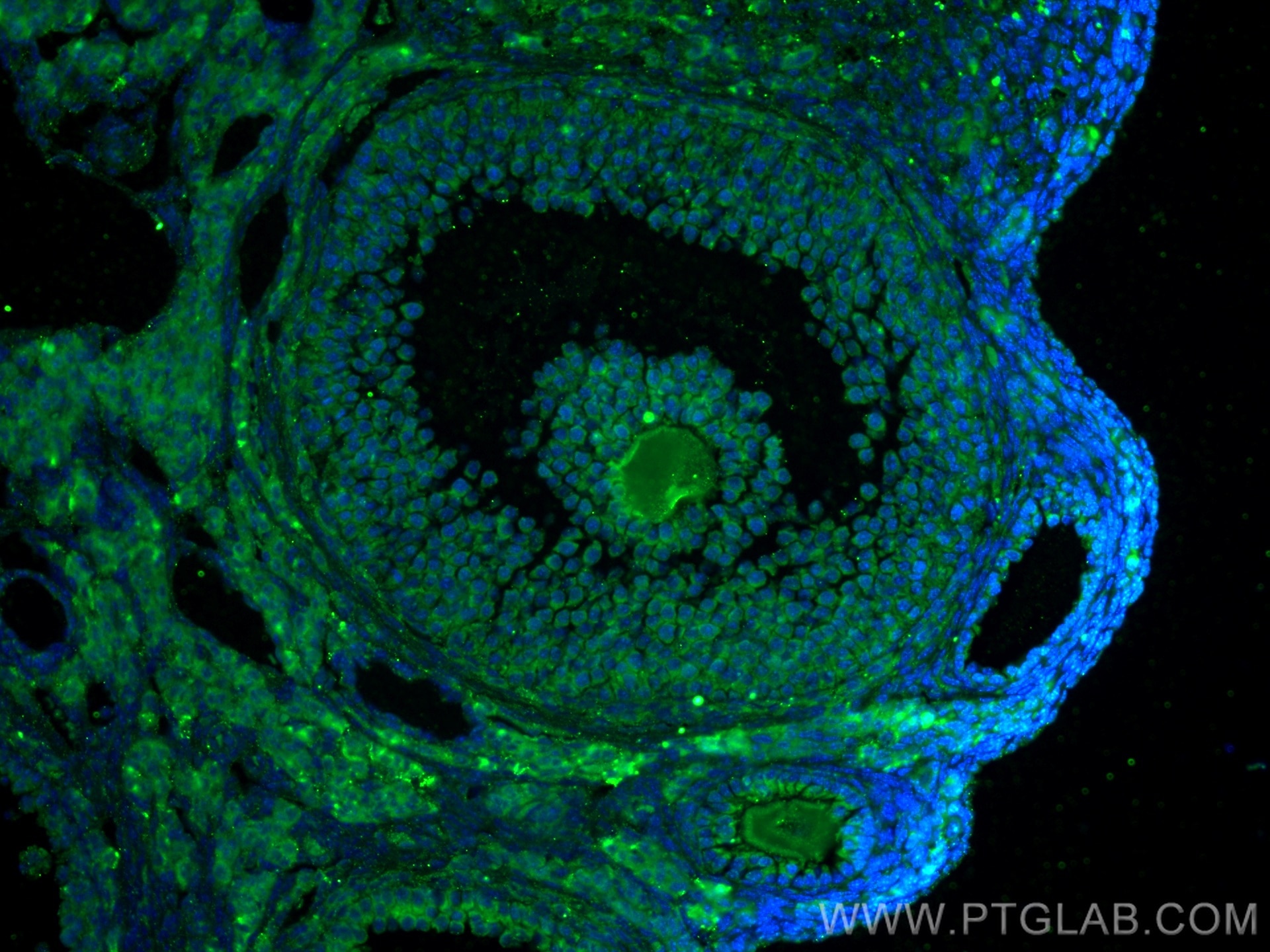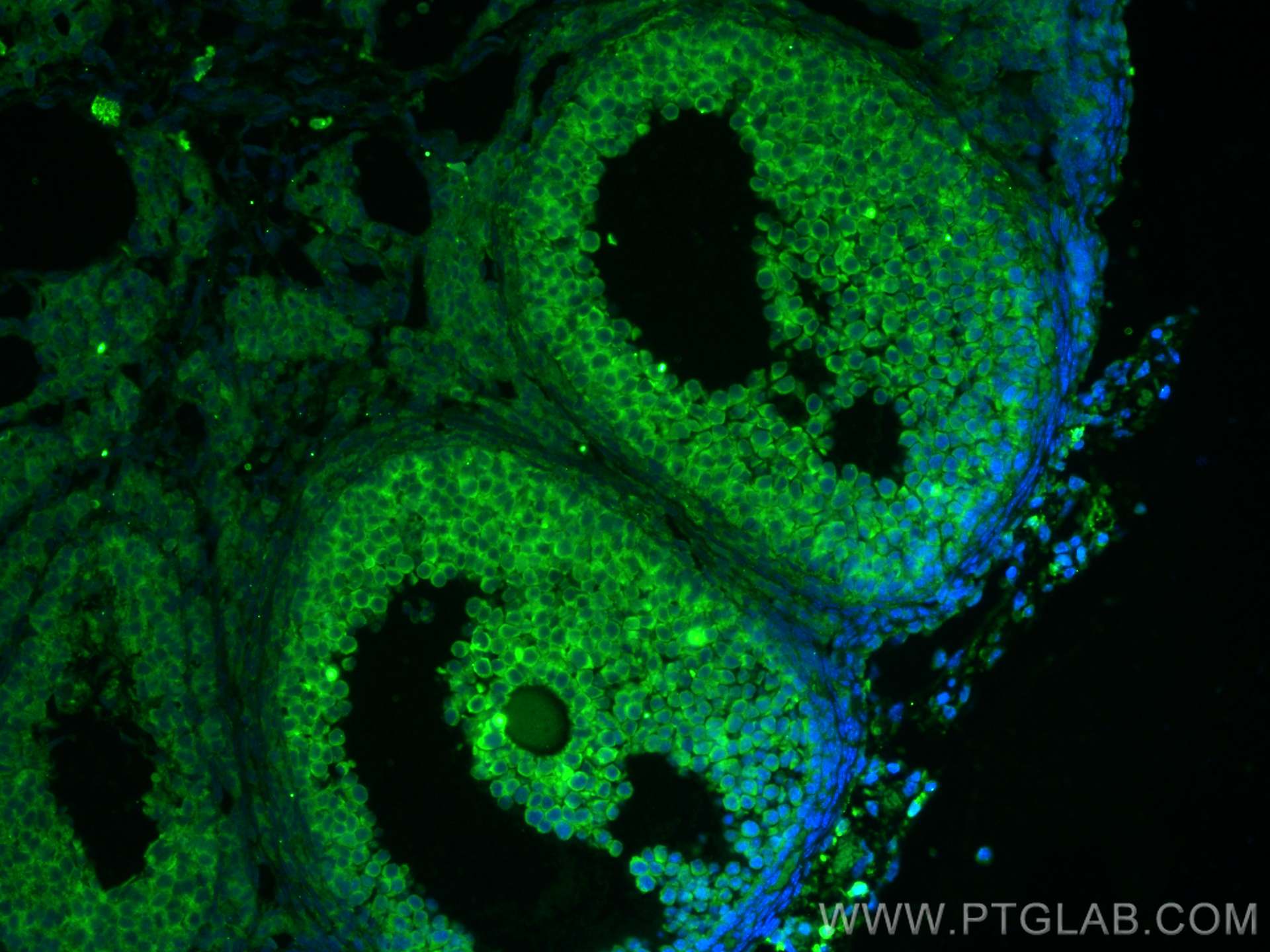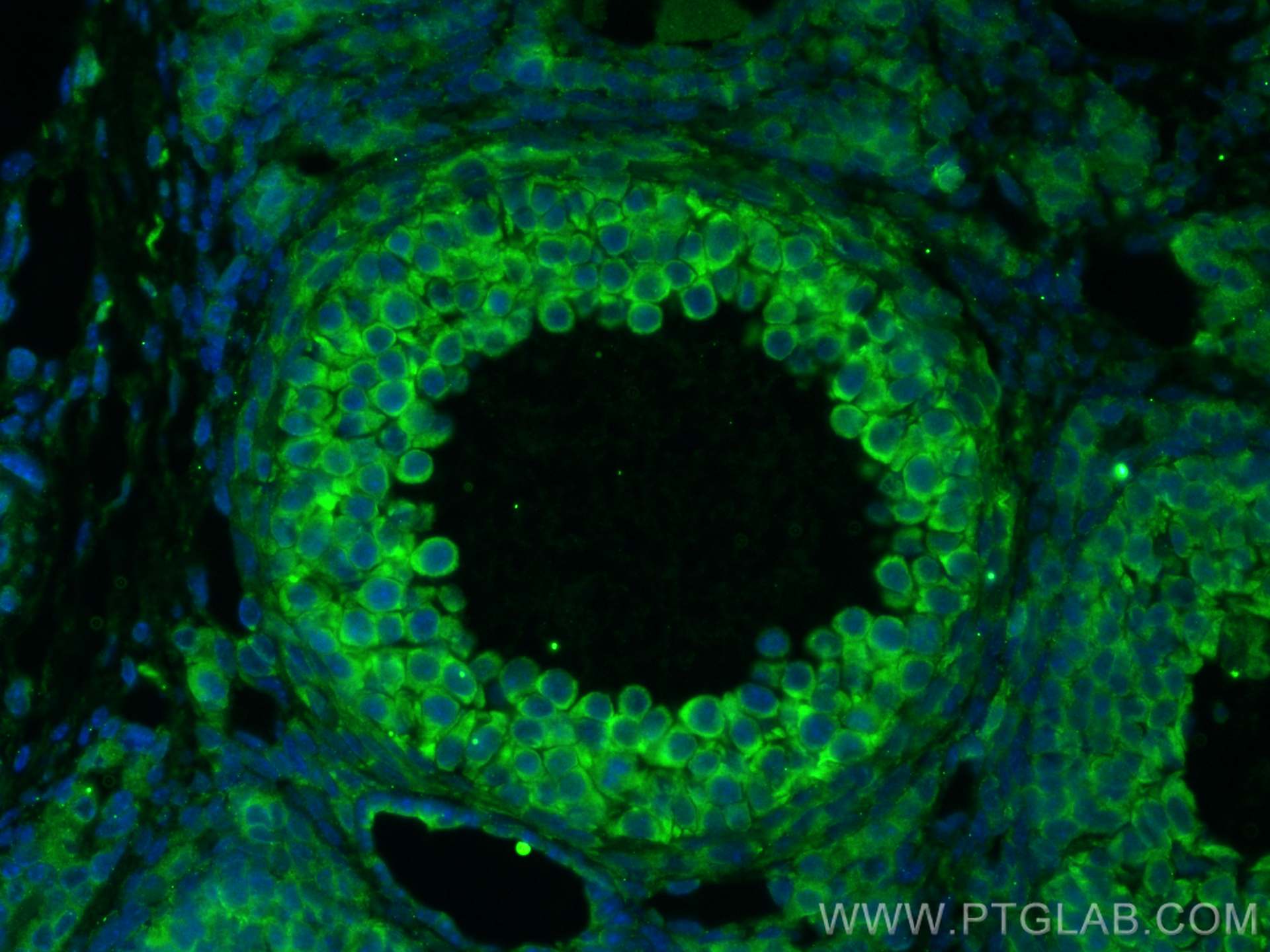- Featured Product
- KD/KO Validated
AMH Polyklonaler Antikörper
AMH Polyklonal Antikörper für WB, IHC, IF-P, ELISA
Wirt / Isotyp
Kaninchen / IgG
Getestete Reaktivität
human, Maus, Ratte und mehr (3)
Anwendung
WB, IHC, IF-P, ELISA
Konjugation
Unkonjugiert
Kat-Nr. : 14461-1-AP
Synonyme
Geprüfte Anwendungen
| Erfolgreiche Detektion in WB | humanes Hodengewebe |
| Erfolgreiche Detektion in IHC | Maus-Eierstockgewebe, humanes Ovarialkarzinomgewebe, humanes Pankreasgewebe, humanes Hodengewebe, Ratten-Eierstockgewebe Hinweis: Antigendemaskierung mit TE-Puffer pH 9,0 empfohlen. (*) Wahlweise kann die Antigendemaskierung auch mit Citratpuffer pH 6,0 erfolgen. |
| Erfolgreiche Detektion in IF-P | Maus-Eierstockgewebe |
Empfohlene Verdünnung
| Anwendung | Verdünnung |
|---|---|
| Western Blot (WB) | WB : 1:500-1:1000 |
| Immunhistochemie (IHC) | IHC : 1:50-1:500 |
| Immunfluoreszenz (IF)-P | IF-P : 1:50-1:500 |
| It is recommended that this reagent should be titrated in each testing system to obtain optimal results. | |
| Sample-dependent, check data in validation data gallery | |
Veröffentlichte Anwendungen
| KD/KO | See 1 publications below |
| WB | See 11 publications below |
| IHC | See 6 publications below |
| IF | See 3 publications below |
Produktinformation
14461-1-AP bindet in WB, IHC, IF-P, ELISA AMH und zeigt Reaktivität mit human, Maus, Ratten
| Getestete Reaktivität | human, Maus, Ratte |
| In Publikationen genannte Reaktivität | human, Hausschwein, Huhn, Maus, Ratte, Ziege |
| Wirt / Isotyp | Kaninchen / IgG |
| Klonalität | Polyklonal |
| Typ | Antikörper |
| Immunogen | AMH fusion protein Ag5670 |
| Vollständiger Name | anti-Mullerian hormone |
| Berechnetes Molekulargewicht | 59 kDa |
| Beobachtetes Molekulargewicht | 60-65 kDa |
| GenBank-Zugangsnummer | BC049194 |
| Gene symbol | AMH |
| Gene ID (NCBI) | 268 |
| Konjugation | Unkonjugiert |
| Form | Liquid |
| Reinigungsmethode | Antigen-Affinitätsreinigung |
| Lagerungspuffer | PBS with 0.02% sodium azide and 50% glycerol |
| Lagerungsbedingungen | Bei -20°C lagern. Nach dem Versand ein Jahr lang stabil Aliquotieren ist bei -20oC Lagerung nicht notwendig. 20ul Größen enthalten 0,1% BSA. |
Hintergrundinformationen
Anti-Müllerian hormone (AMH), also called Müllerian-inhibiting substance (MIS), is a hormone that is best known for its production by fetal testes in mammals and as the inhibitor of Müllerian duct development in males. AMH is also expressed in granulosa cells of preantral and small antral follicles in the ovary. More recently, AMH has been studied for its role in ovarian folliculogenesis and as a potential marker of ovarian reserve. The deduced protein sequence of the AMH monomer contains a 25 amino acid secretion specific signal peptide and a monomeric protein of 535 amino acids that, when glycosylated at two glycosylation sites, has a molecular weight of 65-70 kDa. This antibody is specific to AMH.
Protokolle
| PRODUKTSPEZIFISCHE PROTOKOLLE | |
|---|---|
| WB protocol for AMH antibody 14461-1-AP | Protokoll herunterladen |
| IHC protocol for AMH antibody 14461-1-AP | Protokoll herunterladenl |
| IF protocol for AMH antibody 14461-1-AP | Protokoll herunterladen |
| STANDARD-PROTOKOLLE | |
|---|---|
| Klicken Sie hier, um unsere Standardprotokolle anzuzeigen |
Publikationen
| Species | Application | Title |
|---|---|---|
Basic Clin Pharmacol Toxicol Effects of quercetin on ovarian function and regulation of the ovarian PI3K/Akt/FoxO3a signalling pathway and oxidative stress in a rat model of cyclophosphamide-induced premature ovarian failure | ||
Reprod Sci Menstrual Blood-Derived Endometrial Stem Cells Ameliorate Ovarian Senescence by Relieving Oxidative Stress-Induced Inflammation | ||
Theriogenology miR-140-3p promotes follicle granulosa cell proliferation and steroid hormone synthesis via targeting AMH in chickens
| ||
Comb Chem High Throughput Screen Regulation of Curcumin on Follicle Initiation Rate in Diminished Ovarian Reserve | ||
Tissue Cell HGF-modified human umbilical cord mesenchymal stem cells rescue impaired ovarian reserve function in chemotherapy-induced POI rats by improving angiogenesis while decreasing apoptosis and fibrosis in the ovary |
